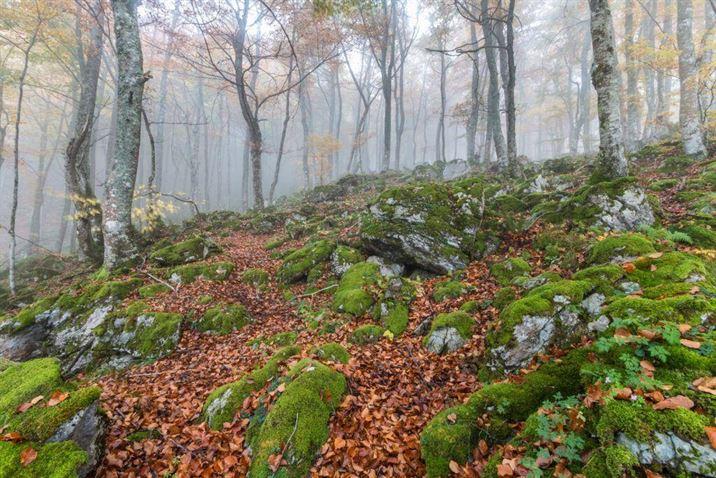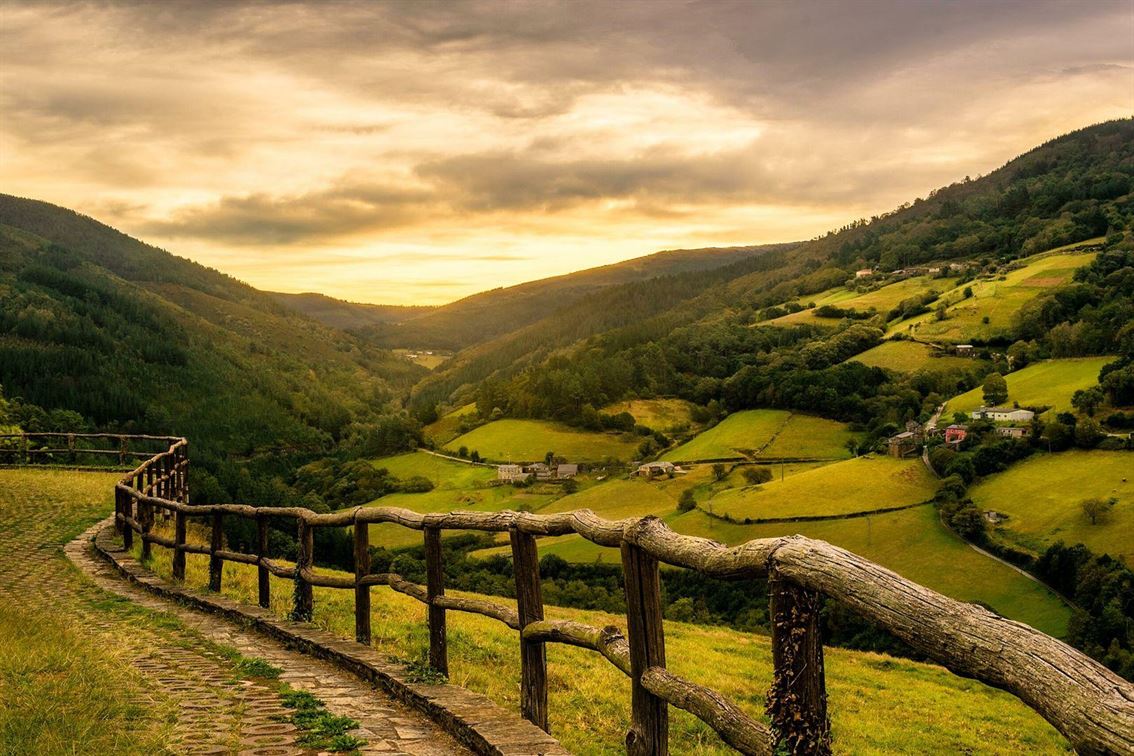The landscapes of Asturias should be enjoyable for every person who visits. For this reason, there are several trails throughout the region that traverse its lush forests and natural settings, which are perfectly doable for anyone. These are adapted routes, with high degrees of accessibility, allowing adventurous hearts to venture into some of the most visited parks and landscapes of Asturias and thus enjoy one of the most popular forms of tourism in the northern region: active tourism. Indeed, Asturias can be felt and experienced in many ways.
Ponga Natural Park
The route is located in Beleño and leads to Collado de Bedules, Ponga. The accessible trail has a wooden floor and is 500 meters long. Additionally, along the trail, there are two viewpoints that are adapted for Braille reading.
Forests account for up to 70% of the vegetation cover in the Natural Park. Within them, beech trees are particularly prominent due to the high humidity of the area. On the other hand, rocky cliffs covered with shrubs are also common, as well as numerous canyons and gorges. Without a doubt, it’s a landscape worth experiencing!

Las Ubiñas – La Mesa Natural Park
The trail called ‘Hayedo de Montegrande’ runs between the towns of Teverga and Quirós. This route has 450 meters of wooden flooring and a viewpoint adapted for Braille reading.
Beech forests once again play a leading role in Las Ubiñas – La Mesa Natural Park. They are usually located on shaded slopes and dominate the forest landscape. Additionally, this area shelters one of the most emblematic animals of the region: the bear.
Redes Natural Park
The ‘Mirando al Cuyargayos’ trail runs between Campiellos and Rioseco. It has an accessible path of 696 meters in length, with a 320-meter section of wooden flooring and another 376-meter section of aripa flooring. The trail also has a viewpoint adapted for Braille reading.
Muniellos Integral Nature Reserve
The ‘Bosque de la Ribera’ route, in the Muniellos Integral Nature Reserve, has an accessible wooden trail of about 600 meters and three panels adapted for Braille reading. However, if you decide on this route, remember to first request authorization from the General Directorate of Biodiversity and Landscape of the Principality of Asturias.
And what will you find on this path? The trail runs through a riverside forest where ash trees, maples, birches, mountain elms, lime trees, willows, and even some beech or oak trees are common. It’s tremendously wild, with little evidence of human activity. As for fauna, numerous species inhabit the reserve, such as wagtails, dippers, or otters.
Fuentes del Narcea Natural Park
The ‘Minas de Oro del Corralín’ route runs through Sisterna, in the council of Ibias. It has an accessible trail of 900 meters in length, with a 300-meter section of wooden flooring and another 600-meter section of aripa flooring. It also has a viewpoint adapted for Braille reading.
Chestnut groves intended for timber use stand out in this area, but old specimens with large trunks and hollow interiors can also be found.
The landscape of Redes Natural Park is primarily forested, with chestnut forests accounting for almost 35% of the Park’s territory. Additionally, Redes harbors in its beech forests a large part of the capercaillie population that still remains in Asturias.
Route around the Tablizas River:
On the other hand, also in the Fuentes del Narcea Natural Park, there is a route with an accessible section for anyone. This is the route around the Tablizas River, declared a Biosphere Reserve in 2003.
No less than 8.5 kilometers of accessible route separate Moal from the Tablizas Visitor Center. It has a low difficulty, as there is hardly any elevation change. However, care must be taken, as another route starts from the Tablizas Visitor Center that enters the Muniellos Forest and is inaccessible.
In the Fuentes de Narcea Natural Park, the spectacular beauty of the landscape changes: from being marked by the Narcea River to valleys and mountain ranges with lush tree cover. As for the fauna, the Cantabrian brown bear, wolf, roe deer, chamois, and capercaillie find their home here.
Camín Real de la Mesa
The Bear Trail may be one of the most well-known routes in all of Asturias. Whether it’s for its particular beauty, for being a comfortable walk both on foot and by bicycle, or for being home to two friendly bears.
The route of the old mining train that ran between Trubia, Santa Marina (Quirós) and Entrago (Teverga) now has 25 kilometers of asphalt fully conditioned as a trail.
To undertake the route, there are parking areas in Tuñón, Bullera, Proaza, and Entrago. Regarding access points, most of them must be reached via medium-grade ramps, while in Tuñón and Proaza, these are at ground level. If you choose the Tuñón access, you’ll find two uphill and downhill slopes. However, after these, the trail becomes accessible, with very slight inclines and mostly flat sections, up to kilometer 10.5 (fork towards Teverga or Quirós).
Ready for adventure? Asturias is waiting for you!

